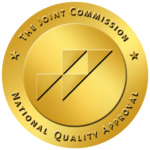The recovery process is a deeply personal journey that must be personalized to fit the unique needs of each individual. Substance abuse treatment programs vary based on the need for medical stabilization, inpatient care, and other intensive services. After clients enter treatment in a sober living environment, they’ll receive the necessary medical care, participate in regularly scheduled group sessions, and be assessed for mental health disorders.
Keep reading to learn more about what’s involved in identifying, assessing, and treating substance use disorders.

BEGIN YOUR RECOVERY TODAY!
We can help you achieve permanent sobriety that gives you your life back. Call to learn more about our therapy options in Phoenix, AZ.
Defining the Continuum of Care in Addiction
As the name suggests, the continuum of care focuses on the recovery journey holistically. Ongoing care is provided in various locations, from inpatient care to outpatient settings, following an initial assessment that sets clear treatment goals.
All areas of well-being are addressed, including medical, physical, and mental health, with each type of care provided by appropriately trained professionals. Information sharing and detailed case management services are essential to successful long-term recovery.
Why Continuum of Care Is Crucial for Effective Addiction Treatment
It would be nice to think of addiction treatment as a simple journey from point A to point B, with no stops in between and nobody getting lost along the way. However, this is rarely the case, and the continuum of care for addiction treatment recognizes this by placing safeguards on the path. It also lets individuals get back on the right track if they stumble. For example, those receiving outpatient services in the later stages can step back up to residential treatment if necessary.
Key Components of the Addiction Treatment Continuum of Care
There are many steps involved in the continuum of care for addiction treatment. Depending on individual circumstances, some may take longer than others or be bypassed entirely. Below, we’ll look at the most common steps toward sobriety, which should help you understand what to expect.
Initial Assessment and Personalized Treatment Planning
Early intervention and individualized care plans give people with a substance use disorder a much better chance of success. Generally, this first step involves a one-on-one interview with the client and potentially with some of their friends and family where appropriate.
In many cases, permission to receive medical and mental health information is requested to create a long-term plan tailored more closely to the individual.
Detoxification and Stabilization: The First Step in Recovery
The next important step in treating substance abuse is the initial detox, which is generally measured in hours, followed by a more protracted process of stabilization, which is measured in days or weeks. Aside from the cravings and discomfort associated with the detox process, there are also some very serious safety concerns.
Depending on the type of substance abuse, as well as the level of usage, medication-assisted treatment (MAT) may be necessary to decrease risks and increase the chance of success.

Residential Treatment: Intensive Care for Lasting Recovery
The range of therapies and services provided in residential treatment programs will vary considerably based on individual needs. Generally, this level of treatment is a continuation of the stabilization process while also introducing a much more structured way of living.
For example, clients may have a schedule set for each day that includes education, group therapy, behavioral training, counseling, cooking, and entertainment. This level of structure has two main benefits: it helps people keep their minds active and distracts them from cravings, and it provides new skills for living and long-term recovery.
Partial Hospitalization Programs (PHP): Bridging the Gap
After detoxing and receiving 24-7 supervision in residential treatment centers, the next step is often a partial hospitalization program (PHP). This outpatient rehab program is sometimes called day treatment, with individuals meeting for around 4 to 6 hours per day, 5 days per week. PHP is particularly suited toward people who have a safe, sober living environment that doesn’t present a significant risk of relapse.
Intensive Outpatient Programs (IOP): Stepping Down Care
Similar to the PHP level detailed above, an intensive outpatient program (IOP) represents another step toward greater independence and reintegration with family, friends, and the community. Individuals meet at a treatment center for around 3 hours per day, 3 days per week, where they continue to receive counseling, therapy, and other support services.
Co-occurring disorders, such as behavioral addictions and mental health issues that were triggered by substance abuse can also be treated in an IOP.
Outpatient Treatment: Maintaining Recovery in Daily Life
Taking another step down in its level of intensity and a step up in terms of independence is a transition that must be handled with care. Individuals must be honest with themselves and their support network to ensure outpatient treatment doesn’t result in setbacks.
At this stage, clients must maintain contact with counselors and therapists and any scheduled group meetings and keep up with the new routines and life skills they’ve learned in previous stages.
Aftercare and Ongoing Support: Ensuring Long-Term Sobriety
This stage is crucial for people with psychiatric and social issues that may present a greater risk of relapse. Otherwise known as continuing community care, this type of support helps people reintegrate into their community, seeking and maintaining employment or education and ensuring their health and nutritional needs are met. Case managers, sponsors, and 12-step groups may play a relatively significant role in this stage as opposed to the treatment center the individual attended.

The Role of Personalized Care in the Continuum of Addiction Treatment
Recognizing the unique needs of each individual is extremely useful in the addiction recovery process. One person may have a relatively minor drug history and little willingness to change, while others with severe substance use disorders may not resist treatment. Likewise, some individuals will do well in more restrictive living environments, while others will succeed in less intensive settings.
Addressing Co-Occurring Disorders and Holistic Health
Various professionals, including psychotherapists, psychologists, and psychiatrists, provide essential services as part of the ongoing support in an individual’s treatment program.
For example, outpatient psychiatry services can help address co-occurring disorders that would otherwise present an obstacle in any outpatient treatment program. These disorders include schizophrenia, anxiety, depression and personality disorders, as well as social and behavioral issues.
Moving From One Stage to Another: What to Expect
As outlined previously in the steps involved in a continuum of care for addiction treatment, most people should expect more intensive, highly structured services focused on the individual in the first stages. Progression toward the later stages represents increased independence with more focus on reintegration with family, friends and community. Throughout the process, support should be readily available upon request in the form of group therapy, one-on-one counseling, and skill building.
Success Factors in the Continuum of Care for Addiction Treatment
While the overall goal of sober living is the ultimate gauge of success, this alone won’t be enough. To live a truly fulfilling life, individuals should set other specific goals and realistic time frames in which they can be accomplished — for example, moving into a place of their own, going back to school or college, or learning a trade, as well as fixing any potentially damaged relationships with friends and family.
Family and Community Support: The Role of External Factors
In many cases, an intensive outpatient program includes an assessment of the family and friends of an individual. This serves two primary purposes. First, it reveals whether substance abuse in these relationships is a barrier to the individual’s recovery. Second, it provides the information and skills necessary for them to help the individual should they suffer a setback.
Overcoming Challenges in the Continuum of Care
It’s almost inevitable that people will find obstacles to overcome, whether it’s an ongoing craving, actual relapse, or co-occurring disorders becoming more problematic. People who maintain employment are far more likely to remain sober, which makes this a critical factor in ongoing support.
Identifying and Addressing Potential Gaps in Treatment
Ongoing assessments and proper case management should minimize gaps in the substance abuse treatment process. However, honesty is vital in determining how many gaps can be sealed and safely avoided. For example, individuals should be truthful when talking to counselors, psychologists, and psychiatrists and let people know their areas of concern.
Strategies for Preventing Relapse and Managing Setbacks
Avoiding roadblocks while recovering may be as simple as keeping in touch with sponsors and support groups. The skills learned earlier while receiving inpatient and intensive outpatient services also play a significant role. This includes dealing with cravings, communicating more effectively with family and friends, avoiding common triggers and managing stress levels.
Trust Camelback Recovery to Provide the Full Continuum of Care in Addiction Treatment
Contact Camelback Recovery for treatment today in Phoenix, AZ, by calling (602) 466-9880 or check your insurance coverage. Our friendly staff can answer questions and help you succeed at every point along the road to recovery. We’re fully licensed and certified by the Arizona Recovery Housing Association (AzRHA) and the Arizona Department of Health Services (ADHS).





